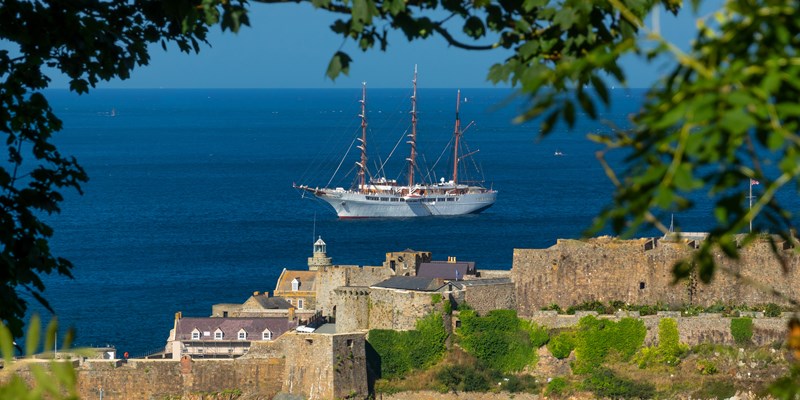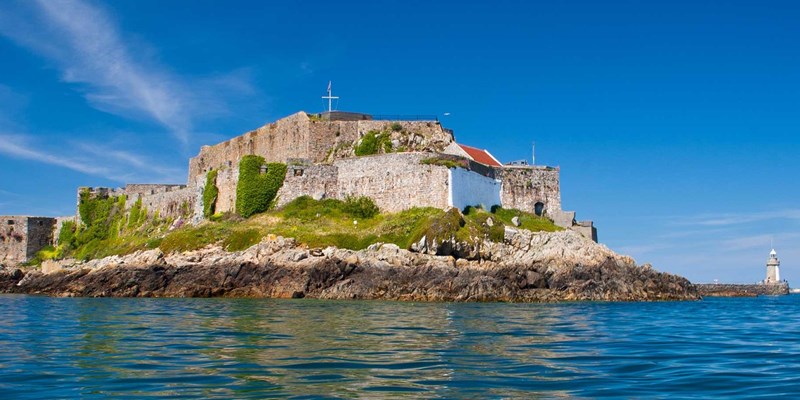Did you know that a Guernseyman is credited with transforming Costa Rica from the poorest country in Central America to the wealthiest in just 20 years?
If you are one of the many people who enjoys a great cup of coffee first thing in the morning, then you may be interested to hear that Guernsey has a fascinating connection to the global coffee trade routes in Costa Rica. In fact, it was all started by a man born and bred in Guernsey, called William Le Lacheur, who is now lauded in the Latin American country as something of a national hero.
Who was William Le Lacheur?
William Le Lacheur (christened Guillaume) was born in October 1802 in the Forest, a parish on the island of Guernsey. He grew up to become a seaman who worked his way up to be captain on boats that transported fresh fruit between the Mediterranean and England. He later did the same work in the Azores. He married a local girl, Rachel Le Messurier, and they had five children together.
By 1836, he was 34 and set up a shipping company called Le Lacheur & Co with a friend, a fellow captain called Captain Grace. As the business grew, the partners expanded their fleet and built larger ships, able to cross the Atlantic. They set off on their first voyage to Brazil in 1841, where on a stop on the Pacific Coast of Mexico, Le Lacheur heard of some issues in Costa Rica with exportation of coffee and spotted an opportunity.
Setting Sail for Costa Rica
Costa Rica had gained independence in 1821. However, they had found no regular European trade routes for their coffee. There was not a lot of development in the country - it was thick with rainforest and mountainous land where the coffee was grown, which made it impossible for them to send anything to or from the Caribbean coast of the country. This resulted in all of their produce being sent to ports on the West, the Pacific coast. At that time, prior to the construction of the Panama Canal, the only way to get out and across the Atlantic was to sail around Cape Horn, at the very south of Chile. Le Lacheur made a deal with Costa Rican growers to use his ship, the Monarch, to transport the coffee to London.
A global coffee trade started
The first delivery of just under 5,000 bags of coffee was loaded onto his ship in Puntarenas port in 1843. That entire first cargo load, which amounted to over a million pounds of coffee, was sold to the London Coffee House. The venture was such a success, and the demand for coffee in London so great that he began to divert his other ships away from their usual fruit trade routes to be used to transport more coffee from Costa Rica to Europe. In 1850, he commissioned five ships to be built to support the growing trade. Another seven ships were added to the fleet in the 1860s.
A New Costa Rica
The more that William Le Lacheur contributed to the Costa Rican economy with his establishment of coffee trade routes, the more he was able to make a significant impact on other areas of the country.
Once the trade routes were in place and ships were regularly departing Costa Rica for England, the more William was able to offer. He arranged with several Costa Rican families to take their sons to England to be educated. This had happened once before with two young brothers, born into a wealthy family who owned a coffee plantation, who were taken to Aberdeen to be educated by two Scotsmen. One returned to become president of the country - José María Montealegre (1859-1863). William was known to be a great role model for the boys he took to England, ensuring they were well looked after and cared for and that they got home safely, well educated and ready for professional roles in the country. The return of the students to Costa Rica coincided with the game of football being introduced to the country. It is still a much beloved sport in the country today.
William was also a devout Christian who noticed a lack of true religion in the country and a tendency towards superstitious beliefs, as opposed to religious education. To rectify what he considered to be an appalling situation, he contacted the British and Foreign Bible Society and got hold of 3500 Spanish bibles, which he distributed, therefore introducing the Protestant faith to the country. The first Protestant Church was built in San Jose, Costa Rica’s capital, a year after he died. His son, John, was involved in installing it. Today, Le Lacheur is memorialised with a plaque on the church recognising his achievements.
In 1856, Le Lacheur made himself useful to the Costa Rican government, when an American filibuster tried to invade the country. William Walker had already succeeded in taking neighbouring Nicaragua, eventually declaring himself President of the Republic there. When he set his sights on Costa Rica, the government had to declare war and deploy troops to their northern border to hold Walker off. It would have been a long and difficult journey for the troops to the battle line, so Le Lacheur offered his ships to transport the army up the coast to conserve their energy, which resulted in them being fit and rested and able to successfully repel the attack, thus saving the country from being taken over.
A Guernsey Legacy in Central America
William Le Lacheur was able to contribute to the rapid transformation of Costa Rica in less than 25 years. He is considered a national hero in the country and his ships are even featured on bank notes and postage stamps. He is buried in Highgate Cemetery in London. When he died, The Guernsey Star newspaper printed the following obituary:
“Guernsey never gave birth to a man of whom the island had more cause to be proud or who has deserved to be more lamented than him whose decease we record. By his industry and intelligence and his Christian virtues he entitled himself to the highest esteem which society can confer.”
Today, Costa Rica still values his legacy. In 2019, the Costa Rican ambassador to the UK, His Excellency Rafael Ortiz Fabrega, made an official visit to Guernsey to remember and give recognition to Mr Le Lacheur. He attended the opening of an exhibition and met with the island’s Chief Minister at the time, Gavin St Pier. They spoke of their wishes to build upon this legacy between the two countries in the lead up to the bicentennial celebrations of Costa Rica’s independence in September 2021. In September 2022, Le Lacheur was commemorated with a Blue Plaque in Guernsey at L’Epinel Farm, Rue de L’Epinel, Forest; the former home of the Le Lacheur family.








